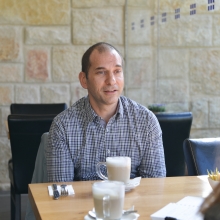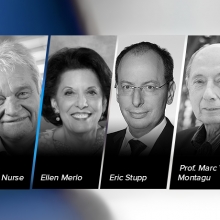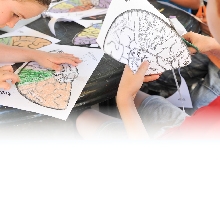Mining Big Data for biomedical gold
Briefs

Big Data―the massive amounts of information created by modern digital technologies―has changed the way we manage, analyze, and leverage what we know. This is particularly true in healthcare, where the Big Data methods used in Weizmann labs are having a transformative impact on clinical practice.
Weizmann scientists have for years employed powerful computational methods to characterize disease. These efforts picked up steam with the launch of the Bench-to-Bedside Program, wherein computational biologists developed strategies for mining electronic medical records for factors linked to health outcomes at every stage of life, on a populationwide scale.
Recent revolutionary developments have inspired the Institute to further advance the partnership between Big Data and healthcare, and Joyce Eisenberg Keefer―a longtime friend of the Institute―answered the call, committing philanthropic funding to create the Ben B. and Joyce E. Eisenberg Foundation Innovation Fund for Big Data and Health Science Research.
The new Fund will build on the Big Data and life science-based discoveries that have emerged from Weizmann labs in recent years, including:
• A culprit for fatty liver: Physician and immunological researcher Prof. Eran Elinav recently discovered a subpopulation of immune cells associated with fatty liver disease. Working with Prof. Ido Amit and using single-cell RNA sequencing―a tool that makes it possible to examine the gene expression level of individual cells by simultaneously measuring the RNA concentration of hundreds to thousands of genes―he showed that the greater the prevalence of this cell type, the greater a patient’s risk for damage that can lead to liver cancer. Future immunotherapies based on this discovery may someday make it possible to protect liver health by altering the balance of immune cell populations.
• A new drug for blood cancer: In experiments combining single-cell techniques with artificial intelligence, Prof. Amit was able to reveal the gene expression characteristic of a blood cancer called multiple myeloma. The unprecedentedly rich detail of the team’s findings allowed them to identify a novel compound that could serve as a lifesaving treatment for patients who develop resistance to typical multiple myeloma drugs.
• Algorithms for more effective medical imaging: Hand-held digital devices have the potential to revolutionize healthcare in underserved communities, by making it possible to transmit ultrasound images to clinical experts located far away. However, such images are usually low resolution, making them difficult for doctors to interpret. Prof. Yonina Eldar is using neural networks, an artificial intelligence approach inspired by the circuits of the human brain, to enhance such images, increasing their usefulness and impact.
The Weizmann Institute is tremendously grateful to Joyce Eisenberg Keefer for her generous contribution to deepening the partnership between traditional life science techniques and cuttingedge computational tools, which is laying the groundwork for the future of healthcare.







